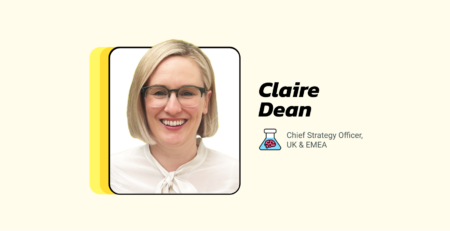What is media strategy, and why is it important?
At its simplest, any strategy is a longer-term view of a plan, a way of achieving a longer-term objective.
Of course that isn’t enough. Anyone can write a longer-term view. What you need, (or otherwise what’s the point?), is a winning strategy. And a winning media strategy will contain three elements:
- A simple diagnosis of what is going on.
- A strategy or system of winning against the competition.
- A plan or set of actions that carry this out.
Let’s use an example that the writer Richard Rumelt explains in his book, Good Strategy, Bad Strategy.
At the Battle of Trafalgar, the English Navy, led by Admiral Nelson, was outnumbered by enemy ships. A traditional sea battle in the 18th century meant the opposing forces lined up against each other and fired until one side won. Nelson’s diagnosis was that this meant that his ships would be sunk if he followed this conventional approach. His strategy in this situation was unexpected and indeed unheard of. Nelson decided to use his existing resources to surprise the enemy. His plan was to drive his ships in a wedge shape through the opposition line up, attack from the rear, and win a place in history, and in Trafalgar Square in London on top of his eponymous column. He took out the competition by breaking the conventional rules, by using his resources available in a focussed and flexible way.
This strategy resonated with me when I read the description for the first time, because it is similar to the very first media strategy I created. One of my first planning accounts was Maxwell House coffee (which was big in the UK in the 1990s). My job was essentially to plan the TV campaign, and I was taught to do this as follows. Every month we ran about 400 television ratings, with ups and downs for seasonality, program choices, regionality, etc, dependent on audience insights and growth opportunities. I was excited when the client commissioned an econometrics project on effectiveness – it was my first experience of this. One-hundred-and-fifty slides later I was as disappointed as the client with the prognosis. The research agency had concluded that it didn’t matter how Maxwell House spent their ad budget. The only thing that impacted sales was what Nescafé did with their advertising.
The client wasn’t happy. I, however, started thinking about what I could do about this. My diagnosis of the data from the econometrics was different from that of the research company who had essentially said that there was nothing we could do to win. We were month after month lining up against competition that had more resources. The competition that, at that time, was running at 500 television ratings a month with a Nescafé ad, up against a Maxwell House ad at 400. My diagnosis was that we needed to disrupt this face off. So I adopted the Trafalgar strategy. The media strategy that was developed was entirely based on beating the competition – so the strategy became overwhelming the competition instead of following them. Instead of a plan of 12 months of TV at 400 ratings a month, which was not cutting through, we instead ran 1200 ratings in one month each quarter. And it worked.
A good media strategy is not just about efficient reach and following the rules of the category. It is about cutting through and beating the competition. Which might be about breaking the rules of the category.
Just as a sea battle now is not based on sailing ships, a media strategy is not based on TV ratings.
A media strategy must be rooted in genuine audience insight that acknowledges the reality of how people watch, listen, and interact in media. Media is not just about reach. It’s about shopping, dating, gaming, socializing, influencing, self-affirmation, interacting, and researching. And about reaching people with brand communications in the broadest sense, and yes – ads. A good media strategy will create a framework for all the ways we can now communicate and deliver competitive advantage for the brand.
The old rules that are based on past behaviors and average behaviors for the category will not suffice. A winning media strategy will be directional for all aspects of the communication plan.
A media strategy should interact with, affect and drive, feed and be fed by creative and data strategies (e.g. what do we want to communicate, what data do we need, what can we find and what will it do for the brand?). It will go beyond reach to set parameters and priorities for media planning in each available channel from retail media to CRM, from connected TV to the Piccadilly lights, from search to social.
With my “Trafalgar” strategy, I found the signals in the data from an econometric study. Today, there are signals everywhere in data. Finding these, interrogating them at a granular, forensic, level and constructing a way to win is the core of a good media strategy.




